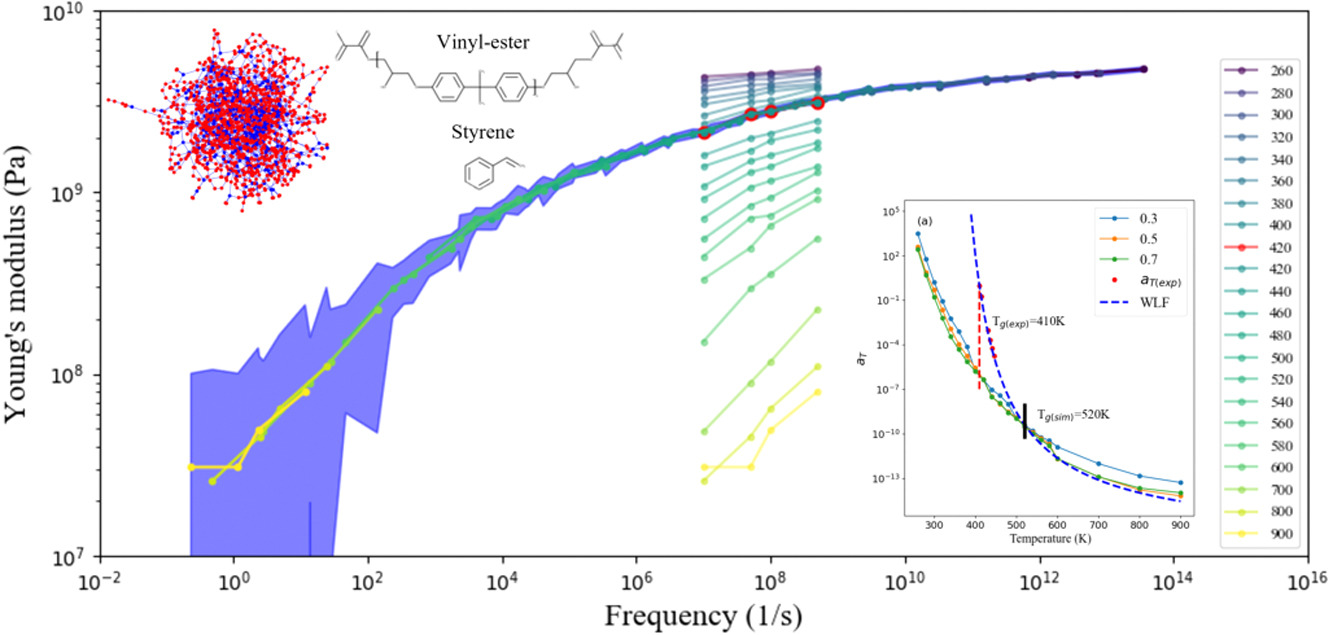The effect of network topology on material properties in vinyl-ester/styrene thermoset polymers using molecular dynamics simulations and time–temperature superposition

Abstract
The time–temperature superposition principle (TTSP) is a promising tool for filling the time-scale gap between molecular dynamics simulation and experiments in polymer systems. Here we propose a molecular dynamics approach to generate vinyl-ester (VE)/styrene (ST) thermoset modulus master curves that are comparable to experiments. Using this approach we generate modulus master curves for VE/ST systems which were generated with various relative reactivity ratios and therefore with vastly different network architectures. The master curves show that, while network architecture is irrelevant for glassy-state moduli measured either at low temperature or high frequencies, it can strongly determine rubbery-state behavior measured at high temperatures or low frequencies. The most important aspects of network architecture are the length of dangling chains and the molecular weight between crosslinks , both of which depend on the relative reactivity of vinyl ester to styrene. We show that the modulus in the transition region between the glassy and rubbery states decreases with increasing at constant monomer composition. Our results provide an explanation for the observation that processing conditions that can affect relative reactivity, such as the processing temperature, can influence and dictate material properties through specific topological features of the cured networks.
Publication Metadata
Authors
Ming Huang, Nicolas J. Alvarez, Giuseppe R. Palmese, Cameron Abrams
Keywords
Citation
Huang M, Alvarez NJ, Palmese GR, Abrams C. The effect of network topology on material properties in vinyl-ester/styrene thermoset polymers using molecular dynamics simulations and time–temperature superposition, Computational Materials Science. 2022; 207: 111264. DOI: https://doi.org/10.1016/j.commatsci.2022.111264
